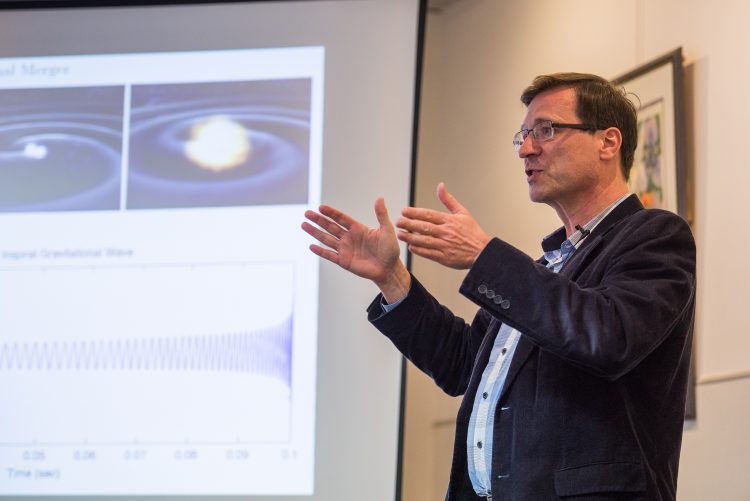Professor Podsiadlowski involved in research around gravitational waves
19 Oct 2017

Gravitational waves have recently been detected for the first time from the merger of two neutron stars. A European Space Observatory-funded ePESSTO project, led by Queen’s University Belfast and involving Oxford astrophysicist Professor Philipp Podsiadlowski (Fellow and Tutor in Physics at St Edmund Hall), confirmed that the merging of two neutron stars is accompanied by a transient, supernova-like astrophysical event known as a kilonova. Such phenomena are powered by the nuclear fusion reactions that take place within the material ejected during a neutron star merger.
Professor Podsiadlowski, co-author of the ePESSTO paper published in the journal Nature, said: “The discovery of the optical transient event confirmed that the merger of two neutron stars is associated with a kilonova. Kilonovae are powered by the nuclear reactions that occur when the neutron-rich material ejected in the merger decompresses and starts to build up heavy nuclei. This includes neutron-rich elements such as gold and platinum, whose origin has been a longstanding mystery.
“Until recently, many astrophysicists believed that these elements were produced in some type of supernova explosion. But these observations suggest that perhaps all of these neutron-rich elements are produced in neutron star mergers rather than supernovae.”
Professor Podsiadlowski added: “One question that remains is whether the unexpected early detection of a neutron star merger by Advanced LIGO implies that the rate of such mergers is much higher than predicted – with important implications for the production of the heavy elements associated with these events – or whether the team was just lucky. This will only be resolved when the detectors operate again in the second half of 2018 after a major upgrade. With increased sensitivity, they should be able to find neutron star mergers on a regular basis.”
More about this research on the University of Oxford website
Categories
Related News

Teddy Hall’s Professor Carly Howett’s Research Suggests Saturn’s Icy Moon May Host Life
10 Nov 2025
